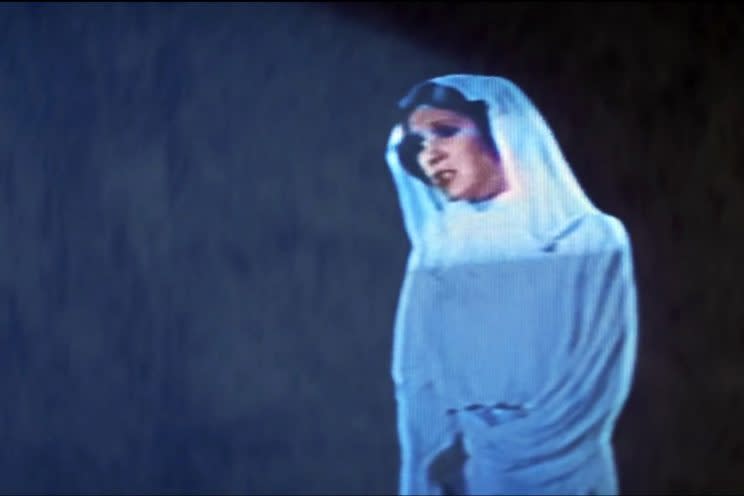Scientists create world’s thinnest hologram which could eventually land on smartphones

Moving 3D holograms have long been the stuff of science fiction – from Star Wars to Iron Man – but we could be a step close to seeing them in everyday life.
Researchers have created the world’s thinnest hologram which can be seen without 3D glasses and is 1,000 times thinner than a human hair.
The Australian-Chinese team from RMIT University in Melbourne hope the breakthrough will eventually lead to the integration of 3D holograms into everyday devices like smartphones, computers and TV.

“Conventional computer-generated holograms are too big for electronic devices but our ultrathin hologram overcomes those size barriers,” explained Professor Min Gu from RMIT University.
“Our nano-hologram is also fabricated using a simple and fast direct laser writing system, which makes our design suitable for large-scale uses and mass manufacture.
“Integrating holography into everyday electronics would make screen size irrelevant – a pop-up 3D hologram can display a wealth of data that doesn’t neatly fit on a phone or watch.
[graphiq id=”8HdjhfJ5CgB” title=”Smartphone Screen Size Over Time” width=”600″ height=”520″ url=”https://sw.graphiq.com/w/8HdjhfJ5CgB” link=”https://www.graphiq.com” link_text=”Visualization by Graphiq” frozen=”true”]
“From medical diagnostics to education, data storage, defence and cyber security, 3D holography has the potential to transform a range of industries and this research brings that revolution one critical step closer.”
Working with Beijing Institute of Technology (BIT), the researchers managed to make the thinnest hologram yet, measuring just 25 nanometres.
Next, the researchers hope to developed a thin film that can be laid on top of an LCD screen.
READ MORE: Instagram ranked most likely to have negative affect on children’s mental health
READ MORE: Here’s how to see the creepy stuff Twitter ‘knows’ about you
“But beyond that, we are looking to create flexible and elastic thin films that could be used on a whole range of surfaces, opening up the horizons of holographic applications,” said Dr Zengyi Yue, who co-authored the paper.
The study is published in the journal Nature Communications.

 Yahoo Finance
Yahoo Finance 
